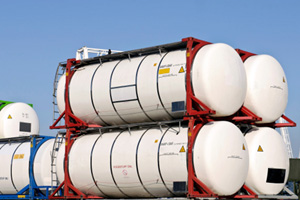 A report from a group charged with identifying ways to improve chemical safety and security in the U.S. says that communities with chemical facilities must be much better prepared for incidents than they are at present.
A report from a group charged with identifying ways to improve chemical safety and security in the U.S. says that communities with chemical facilities must be much better prepared for incidents than they are at present.
“Communities need to know where hazardous chemicals are used and stored, how to assess the risks associated with those chemicals, and how to ensure community preparedness for incidents that may occur,” according to a working group convened by Executive Order (EO) 13650, Improving Chemical Facility Safety and Security. President Obama issued the order after a number of serious chemical accidents, including the2013 explosion in West, Texas that killed 15 people.
The Chemical Facility Safety and Security Working Group also noted that local geographic and socioeconomic issues must be taken into account in order to address the differing needs of sensitive populations, such as individuals with special medical needs, children, or those with transportation challenges.
That finding was just one of many in “Actions to Improve Chemical Safety and Security – a Shared Commitment,” issued by a group comprised of the EPA, the Department of Labor (DOL), the Department of Homeland Security (DHS), the Department of Justice, the Department of Agriculture, and the Department of Transportation.
Lack of resources at local level
While stakeholders said the most effective emergency planning occurs at the local level, many Local Emergency Planning Committees (LEPCs) and Tribal Emergency Planning Committees (TEPCs) don’t have the resources to conduct emergency planning and training.
Additionally, communities expressed concerns about:
- A perceived lack of effective communication from industry partners regarding incidents and general facility safety performance
- Local plans to shelter in place, evacuate, or relocate during an incident
- Recovery support to include consideration of community members with chronic special medical needs or those facing socioeconomic challenges
- Tthe failure to address the specific vulnerabilities of lower-income communities, including environmental justice considerations.
The steps taken by the Working Group to address these concerns include:
1. DHS and EPA engaged with LEPCs and first responders across the country to identify and discuss potential methods to increase first responder preparedness and to share lessons learned across departments.
2. EPA continued to upgrade its Computer-Aided Management of Emergency Operations (CAMEO) suite to provide more useful and accurate information to emergency personnel and the public.
3. Federal Emergency Management Agency (FEMA) educated State Administrative Agencies on how the Homeland Security Grant Program allows risk-centric, capabilities-based planning and preparedness training for chemical incidents.
Future Actions to Strengthen Community Planning and Preparedness
The Working Group identified five priority action areas to help strengthen community planning and preparedness, to include:
1. Strengthening State Emergency Response Commissions (SERCs), Tribal Emergency Response Commissions (TERCs), LEPCs, and TEPCs.
2. Improving first responder and emergency management preparedness and response training.
3. Identifying and coordinating resources for SERCs, TERCs, LEPCs, and TEPCs to sustain planning and response efforts.
Executive Order 13650 Actions to Improve Chemical Safety and Security – a Shared Commitment vi
4. Expanding tools to assist SERCs, TERCs, LEPCs, and TEPCs in collecting, storing, and using chemical facility information.
5. Enhancing awareness and increasing information sharing with communities around chemical facilities.
The Working Group also recommended:
- Enhanced federal operational operation
- Improved data management
- Modernized policies and regulations
- Incorporating stakeholder feedback and developing best practices
Click here for more on the report.


